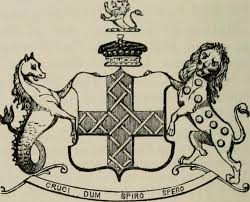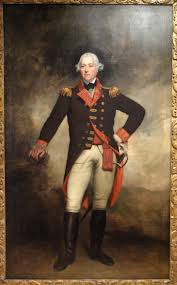What Is A Viscount? Unraveling The Mystery Of This Noble Rank
The world of nobility, with its dukes, marquesses, earls, and barons, can often seem like a complex tapestry woven with centuries of history and tradition. Among these illustrious titles, one often sparks curiosity: the Viscount. While it might not always grab the headlines like a Duke or seem as straightforward as a Baron, the Viscount holds a rich history and a unique, pivotal place within the intricate hierarchy of the peerage. So, what exactly is a Viscount?
At its core, a Viscount is a member of the peerage, the distinguished class of powerful nobles primarily found in the United Kingdom and across Europe. This title signifies a specific rank, one that comes with centuries of heritage and, traditionally, a set of responsibilities.
Understanding the British Peerage System
To truly grasp the significance of a Viscount, it’s essential to understand the broader framework of the British peerage system. This system organizes noble ranks in a clear, descending order of precedence, each with its own history and level of dignity. The peerage has five distinct ranks, which, in descending order of seniority, are:
- Duke: The highest rank, often associated with royal connections or significant historical landholdings.
- Marquess: Ranking below a Duke but above an Earl, this title historically denoted a lord of a border region.
- Earl: An ancient title, equivalent to a European Count, ranking below a Marquess.
- Viscount: The fourth rank in the peerage, positioned directly below an Earl and above a Baron.
- Baron: The lowest rank of the peerage, often signifying a feudal lord or a peer by writ.
Conversely, in ascending order, the ranks are Baron, Viscount, Earl, Marquess, and Duke. A Viscount is formally addressed as "My Lord" and is considered "Right Honourable." For a woman holding this title in her own right, or as the wife of a Viscount, the equivalent title is a Viscountess.
Hierarchy Within Ranks: The Oldest Peerage Rule
It's also worth noting a subtle but important nuance within the peerage system: within each tier, superiority is given to the holder of the oldest peerage. For example, if two individuals both hold the title of Duke, the one whose ducal title was created earlier in history would be considered more senior than the other, regardless of their personal age or current influence.
A Glimpse into History: The Origins of the Viscount
The term "Viscount" itself offers a clue to its historical roots. It comes from the Latin word "vicecomes," which literally translates to "deputy of a count" or "vice-count." This etymology points to the Viscount's original role as a deputy or lieutenant to an Earl (the British equivalent of a Count in continental Europe).
From Latin Roots to Royal Decrees
Historically, during the Carolingian period in European history, individuals known as "vicecomites" or "missi" served as administrative officials. These early figures laid the groundwork for the later noble title. However, the formal establishment of the Viscount as a distinct noble rank within the British peerage system is more recent than some other titles.
The title of Viscount was first officially recorded in England in 1440. This pivotal moment occurred when Henry VI, who was King of both England and France, consolidated the titles of the two countries. He bestowed the title of Viscount Beaumont upon John, Lord Beaumont, making him both Viscount Beaumont in England and Viscount Beaumont in France. Despite this early creation, the title did not gain widespread popularity or common usage until the 17th century. Furthermore, these titles did not become hereditary until the peerage system was firmly established, evolving from appointed administrative roles to inherited noble status.
Beyond the Title: The Traditional Roles of a Viscount
While today the role of a Viscount is largely ceremonial and steeped in tradition, historically, the title carried significant administrative and judicial responsibilities. Viscounts were not just nobles; they were active participants in the governance and administration of their regions.
Administrators, Deputies, and Sheriffs
Traditionally, Viscounts served as deputies to Earls, assisting them in managing their vast domains. They were often tasked with critical local administrative duties, acting as local administrators who ensured the smooth functioning of the realm. Their responsibilities included:
- Administering Justice: Overseeing legal matters and ensuring law and order within their designated areas.
- Collecting Revenues and Taxes: Managing financial affairs for the Crown or their superior Earl, including collecting taxes from subjects.
- Acting as Castellan: Often serving as the commander or governor of a local castle, responsible for its defense and maintenance.
In some historical contexts, the title of Viscount was even associated with the role of a deputy sheriff, highlighting its connection to law enforcement and local governance. Many countries, even beyond Britain, historically required a Viscount to hold an administrative or judicial position within the government, underscoring the functional aspect of the title.
The Viscount Today: Courtesy Titles and Modern Relevance
In contemporary times, while the administrative and judicial roles of Viscounts have largely diminished, the title itself remains an important part of the British social and historical fabric. There are approximately 111 viscountcies currently extant within the peerages of the British Isles. However, it's important to note that many of these are secondary titles.
Viscounty: The Domain of a Viscount
The status and any domain held by a Viscount is known as a "viscounty." This term refers to the territory or jurisdiction associated with the title, though in modern times, it primarily denotes the dignity and status rather than direct territorial control. In the case of French Viscounts, for instance, the title is sometimes left untranslated as "vicomte," preserving its original linguistic form.
Numbers and Courtesy
A specifically British custom involves the use of "courtesy titles." Many extant viscountcies are used as courtesy titles, particularly for the heir apparent of an Earl or a Marquess. If the second most senior title held by the head of a family is a viscountcy, their eldest son, even before inheriting the primary title, might be referred to as a Viscount by courtesy. This practice helps to delineate the line of succession and acknowledge the future holder of the peerage.
Notable Viscounts and Enduring Legacy
Throughout history, many individuals holding the title of Viscount have left their mark. One notable example is Godfrey Charles Morgan, 1st Viscount Tredegar. A Welsh Viscount, he was renowned for his profound dedication to Welsh culture and heritage. An avid supporter of Welsh literature and history, he made significant contributions to their preservation and promotion, embodying a noble's commitment to their region's identity.
Beyond England and Wales, Irish viscountcies also have a rich history. Some of the earliest recorded Irish viscountcies include Viscount Clontarf and Viscount Baltinglass, both created in 1541, followed by Viscount Mountgarret in 1550, and Viscount Decies in 1569. These examples highlight the widespread adoption and significance of the Viscount title across the British Isles.
Conclusion
The Viscount, though perhaps less ostentatious than a Duke or Marquess, occupies a vital and fascinating position within the European and particularly the British peerage system. From its Latin origins as a "deputy of a count" to its formal establishment in the 15th century and subsequent rise in popularity, the title of Viscount has evolved significantly. Traditionally serving as key administrators, justice keepers, and tax collectors, Viscounts played an active role in local governance. Today, while their duties are largely ceremonial, the approximately 111 extant viscountcies, many used as courtesy titles, continue to represent a rich lineage and an enduring legacy of nobility. Understanding what a Viscount is provides a deeper appreciation for the intricate history and enduring traditions of the aristocratic world.

Baron | Definition, History & Rights | Britannica

A Viscount, History of Viscounts, British Peerage System, Duke

A Viscount, History of Viscounts, British Peerage System, Duke